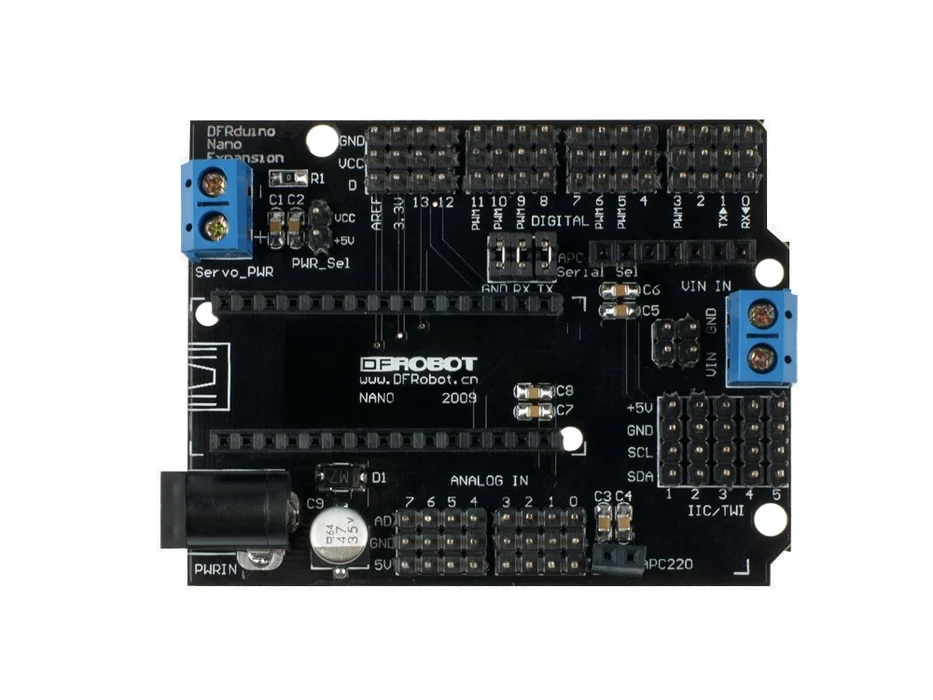
Overview
The Nano I/O Sensor Shield is an expansion board for the Arduino Nano. There are several different options for power input. The form factor of the Nano I/O Shield board is the same as the Arduino UNO/Arduino Leonardo. In addition, the sensor shield adopts Gravity interface that each pinout includes 5V and GND pins for easy connection to Gravity sensors or servos. To the best compatibility, the shield supports jumper wires for rapid prototyping.
This unit comes fully assembled. The board also has a space specifically for bluetooth module and ACP220. Several I2C pins are also expanded.
The shield has independent power supply to provide extra power for servo and other sensors.
Tech specs
- Power supply: +5 V
- Size: 69x54mm (2.7 x 2.1 in)
Get Inspired
Print a claw on your 3D printer and use a myoelectric sensor to control it.

"But can it run Doom?" is more than just a joke in the tech world. It is also a decent litmus test for the computing power of hardware. That test isn't very relevant for modern computers, but it is still worth asking when discussing microcontrollers. Microcontrollers vary in dramatically in processing power and memory, with models to suit every application. But if you have an Arduino Nano ESP32 board, you can run Doom as Naveen Kumar has proven. The Nano ESP32 is a small IoT development board for the ESP32-S3 microcontroller, featuring Wi-Fi® and Bluetooth® connectivity. It also has a relatively high clock speed and quite a lot of memory: 240MHz and 512kB SRAM, respectively. That still isn't enough to meet the requirements of the original Doom release, which needed a lot more RAM. But Kumar demonstrates the use of an MCU-friendly port that runs well on this more limited hardware. Want to give it a try yourself? You'll need the Nano ESP32, an Adafruit 2.8" TFT LCD shield, an M5Stack joystick, a Seeed Studio Grove dual button module, a breadboard, and some jumper wires to create a simple handheld console. You'll have to compile and flash the Retro-Go firmware, which was designed specifically for running games like Doom on ESP32-based devices. You can then load the specialized WAD (Where's All the Data) files. Kumar reports an average frame rate at a 320×240 resolution, which is very playable.





